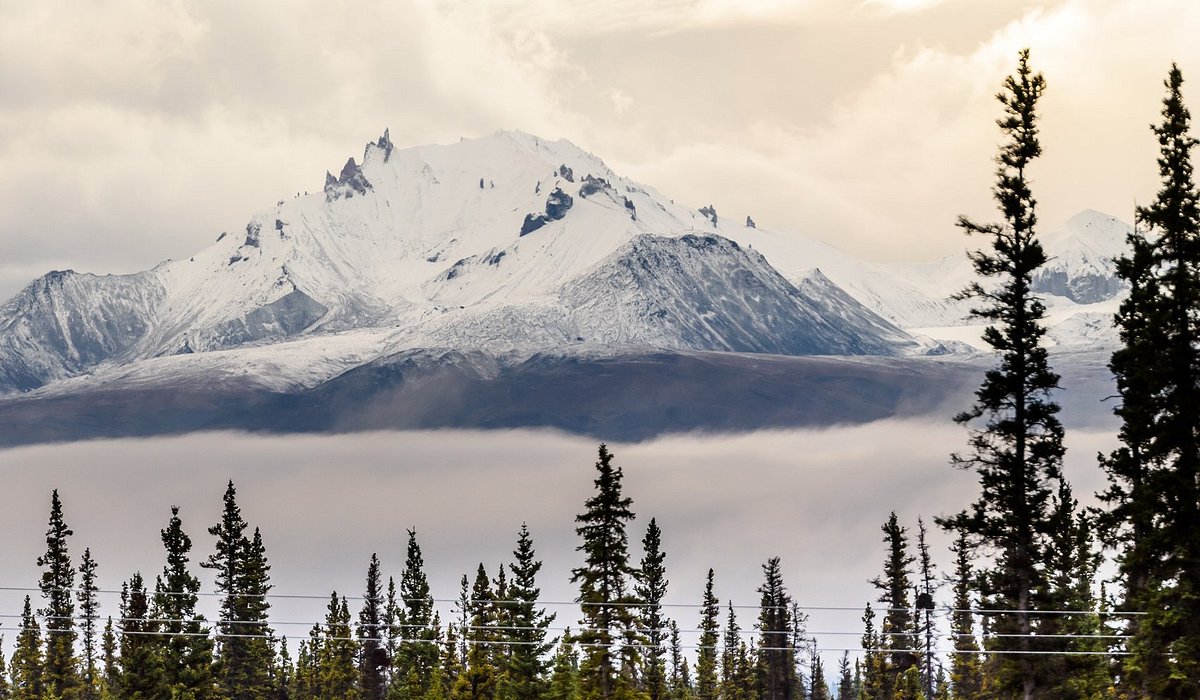×
Warning: The information provided here was generated using artificial intelligence. While efforts have been made to ensure accuracy, the content may contain errors or biases inherent to AI systems.

In Anchorage this week, Mary Daly, President and CEO of the Federal Reserve Bank of San Francisco, cast a sharp eye on Alaska’s economic landscape, noting its striking resemblance to the nation’s broader trends. Her visit, steeped in discussions about jobs, wages, and growth, revealed a state no longer trailing the U.S. but converging with it. “Alaska has often lagged while the nation surged,” Daly told Alaska Public Media’s Ava White. “Now, the lines are blurring, with shared struggles—rising prices, creeping inflation, and unease about job security.” These pressures, from housing shortages to childcare barriers, echo across the Lower 48, binding Alaska to a national narrative of economic strain.
Yet, Alaska’s economy defies a singular definition. Daly underscored its mosaic nature, where rural regions operate on subsistence, often without cash, distinct from urban hubs like Anchorage or Fairbanks. “You don’t have one economy here—you have economies,” she said, her words carrying the weight of someone who has studied the state’s complexities within her West Coast district. This diversity demands tailored solutions, a point echoed by Alaskans, from Native communities to newcomers, who call for progress that lifts every corner of the state. Collective action, Daly argued, must bridge these divides to foster resilience.
Digital currency’s rise poses a unique challenge for Alaska’s remote communities, many lacking reliable internet or even banks. Daly reassured Alaskans that the Federal Reserve, through its San Francisco branch, remains committed to ensuring physical cash reaches those who need it. “We’re not phasing out currency until everyone’s ready,” she said, a nod to the practical realities of places far removed from digital infrastructure. This pledge reflects a broader mission to keep Alaska’s varied economies tethered to the financial system, even as technology reshapes it.
The Alaska Permanent Fund Dividend (PFD), a $1,000 payment approved this year, sparks debate about its role in consumer behavior. Daly noted its diminishing power against soaring living costs, a concern mirrored nationwide where government payouts struggle to match inflation’s pace. “The PFD alone can’t sustain people,” she said. “The challenge is building a durable economy where effort fuels opportunity.” She urged Alaska to diversify beyond oil, gas, tourism, and fishing, advocating for training to equip workers for emerging industries. This vision of a “virtuous cycle” hinges on broadening the state’s economic base to weather global shocks.
Alaska’s reliance on global commodities like oil and tourism sets it apart from states that track the U.S. economy’s rhythm. Tariffs, international demand, and price swings hit harder here, Daly observed, making diversification a shield against volatility. Housing, too, looms large, with high construction costs and shortages plaguing both urban and rural areas. Daly pointed to local efforts, like Anchorage’s relaxed zoning and tax incentives for multifamily housing, as steps to break the deadlock. “These policies unleash private sector growth,” she said, signaling hope for easing Alaska’s housing crunch.
Fears of a recession linger, and Daly acknowledged the Federal Reserve’s delicate balancing act. “We’re watching the slowing labor market closely,” she said, intent on calibrating interest rates to stabilize prices and jobs without tipping the economy into decline. Her goal: a soft landing for Alaskans and the nation. Yet, recent turmoil—President Trump’s firing of the Bureau of Labor Statistics commissioner over disputed job numbers—casts a shadow. Daly called the integrity of such data “critical,” noting that the Fed leans on consistent statistics, private sources, and direct voices from communities like Anchorage to navigate uncertainty. For Alaska, aligning with the nation’s economic pulse offers both challenges and a chance to forge a sturdier future.





Comments
No comments yet.